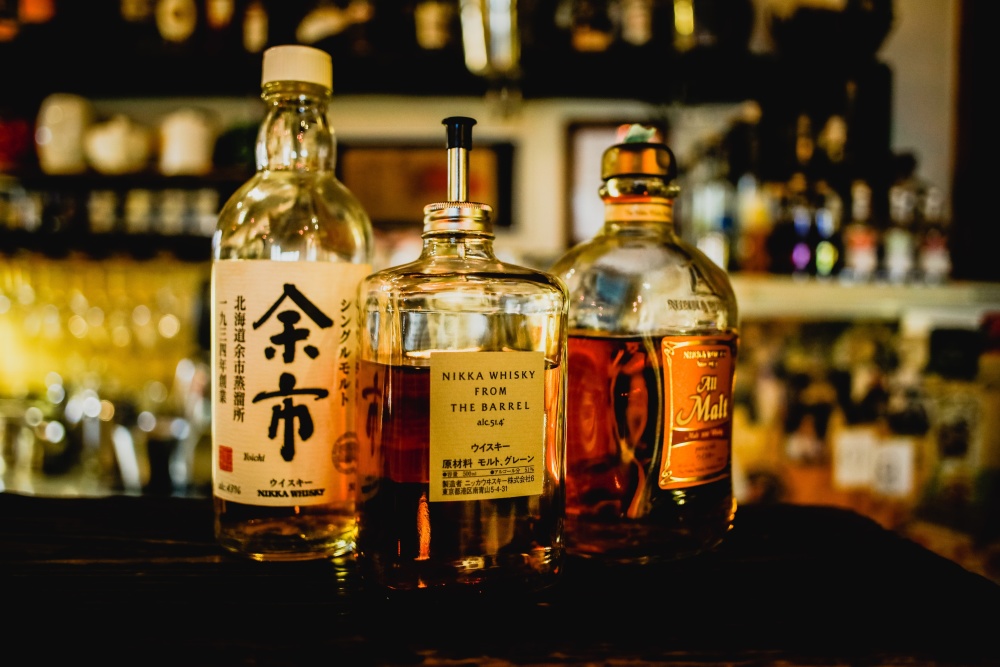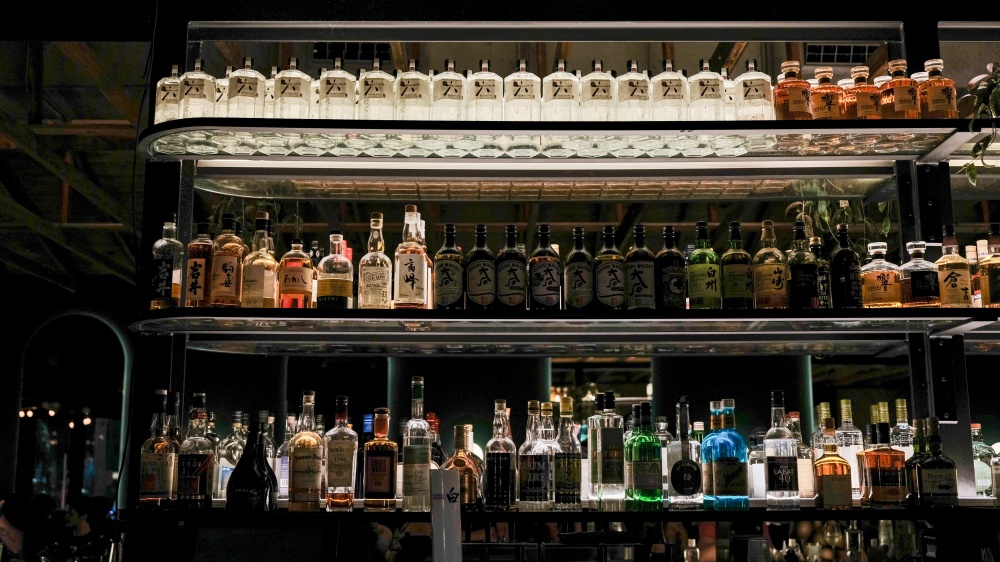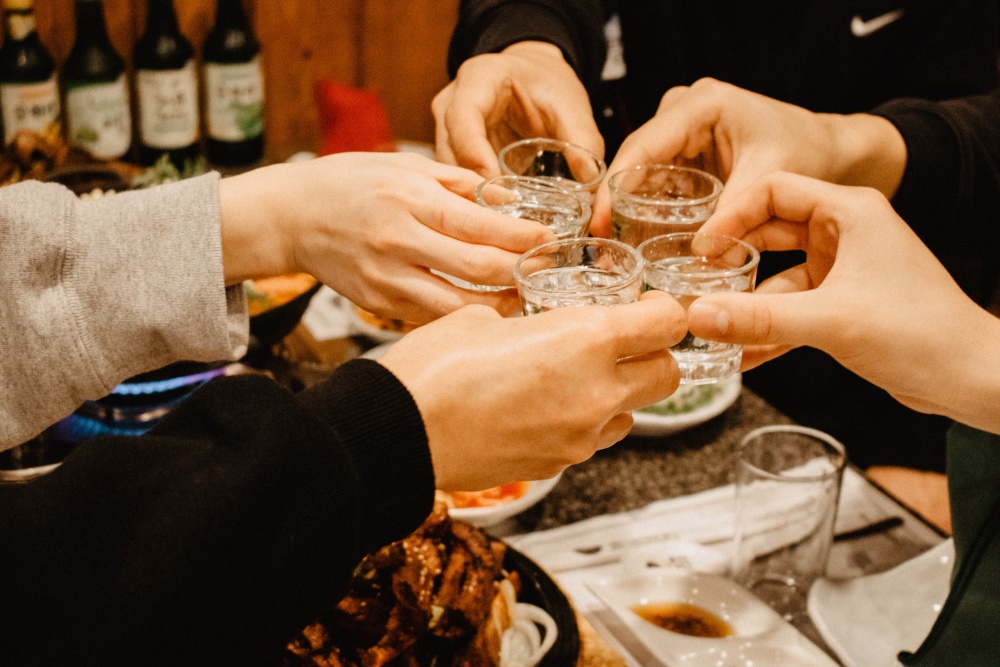Updated March 13, 2023
Japanese alcohol: Your complete guide
There’s no denying that drinking is an integral part of Japanese culture.
Not only is it a social thing, but it’s a big part of the business culture too. You see, alcohol acts sort of like a social glue in Japan. It makes it easier for everyone to let loose and have fun, and it even helps soften some social interactions that could otherwise be considered rough.
In such an environment, especially if you’re a foreigner who isn’t from a place with a strong drinking culture, the inner workings of social life in Japan can be hard to figure out.
This is why as a “foreigner” who’s been living in Japan for a good minute, I had the idea of creating a comprehensive guide to the expansive world of Japanese alcohol for newcomers and those who are curious.
In this post, I’ll introduce all of the alcoholic drinks that are popular in Japan, and tell you what the top brands are. I’ll also briefly introduce the Japanese drinking culture and how you can survive it.
First things first, let’s start with popular alcoholic drink types in Japan.
It’s Not Just Sake
Just like any other country with a big drinking culture, Japan has its own types and brands of alcoholic beverages — that are not just sake — that you may not even be familiar with. Believe it or not, there’s more to Japanese alcohol than just sake. The movies and TV shows you watched might have led you to believe that all Japanese people do is drink sake, but the reality is far from that.
In fact, even though sake is known as rice wine outside of Japan, it actually refers to all types of alcoholic beverages and is often used as a general term for alcohol. The rice wine that’s known as sake outside of Japan is called Nihonshu here.
Nihonshu comes in many different types and flavors, and it would be impossible to cover all varieties in one post, but the most basic version is made with rice, koji mold, and water.
Even though Nihonshu, or sake, is known as a rice “wine,” it’s actually more similar to beer in the way it’s brewed. However, while the fermentation process of beer happens in two steps, nihonshu is brewed in a single step thanks to the koji mold used.
This process also results in higher alcohol content, which is why people call it a wine rather than a beer.
Nihonshu is a true staple of Japanese drinking culture as it can be found everywhere in Japan, and you can even find small single-serving-size shots of Nihonshu in small shops.
Types of Japanese Alcohol
With sake — or rather nihonshu — out of the way, let’s explore the vast, vast world of alcoholic drinks in Japan.
Shochu
Not to be confused with the Korean drink Soju, shochu is a grain liquor and is considered a spirit. The distilled liquor can be made with various ingredients such as rice, sweet potatoes, sugar cane, and/or buckwheat.
The alcohol content of shochu is usually between 20 and 40%, and it’s a colorless, clear drink. Since shochu can be made from various materials, there isn’t a specific flavor or taste. Each shochu has a different flavor depending on the main ingredient that was used in the fermentation process.
If you’re not accustomed to the taste, going for a barley or buckwheat-based one is a good idea, both of which have milder flavors. For a sweeter taste, you can choose a sugar cane-based one.
There’s also another distinct type of shochu that’s unique to Okinawa. Meet Awamori.
Awamori
Awamori is a type of shochu at heart, but it’s specific to Okinawa due to the black koji mold that’s used.
Awamori can also be made from various types of grains, but it’s mostly made with long-grain rice. The beverage can be enjoyed by itself over ice or mixed with water or other ingredients in a cocktail.
Although awamori can be enjoyed fresh, it can also be aged. An awamori that’s been aged more than three years old has a special name, which is kuusu. As one would expect, Kuusu has a much richer flavor, but it’s also stronger.
Umeshu (Plum Wine)
Plum wine may not be unheard of, but umeshu, which is a type of plum wine, is made exclusively from a specific strain of tart plum called ume, hence the name ume-shu (plum alcohol).
Essentially, umeshu is made from ume plums, sugar, and shochu. It has a decently high alcoholic content at about 35% and is categorized as a distilled spirit.
The taste of the amber, golden-colored umeshu can be described as refreshing, sweet, and sour, with hints of fruitiness. Although the taste is sweet and the drink goes down very easily, it’s recommended to take it slow, as the high alcohol content can hit you out of nowhere.
Umeshu can be enjoyed by itself, and it can also be found readily mixed with other juices in cans. It’s also a common ingredient in Japanese cocktails.
Atsukan
Atsukan is basically hot sake, or hot nihonshu, to be precise. It’s a drink that’s often enjoyed during cold winter months and is similar to mulled wine in the way that it’s consumed.
As it’s basically nihonshu at its core, Atsukan is also made from rice and koji mold. Even though it is often enjoyed very warm (usually 50°C or 120°F degrees), there are actually various other acceptable serving temperatures for Atsukan.
For each temperature level, the drink takes on a different name. To name a few, tobikiri is atsukan that’s enjoyed at 55°C or 131°F, which turns into joukan at 45°C or 113°F, hitohadakan at 35°C or 95°F, hiyakan at 15°C or 59°F, and hanabie at 10°C or 50°F.
Japanese Whisky

Not to be confused with whiskey, which is distilled from grains in the USA and Ireland, whisky refers to Scottish, Canadian, and Japanese-distilled grain spirits. It has a drier taste than American bourbon, and it also has a smokier flavor.
Although it’s a western-influenced drink, Japanese whisky has made a name for itself among whisky enjoyers worldwide. The drink is a staple at all the bars, restaurants, and izakaya (small Japanese-style pubs that also serve food) in Japan.
Japanese whisky is usually consumed on the rocks or by itself. However, another more popular way to drink Japanese whisky is highball, which is a drink in its own right.
Highball
Highball is essentially Japanese whisky mixed with sparkling water, but it has its own name due to its nationwide popularity. It became popular due to the heavy taxation of beer in Japan and quickly became an alternative to it.
The drink is prepared with a small amount of whisky and lots of cold sparkling water, and it’s recommended to drink it with lots of ice. It comes in cans already mixed, but it can also be mixed with other fruit-based sodas and juices or garnished with a simple lemon slice.
Due to the low amount of whisky it contains, the alcoholic content of highball is usually around 5–10%.
Chuhai
Chuhai is a shortened name for “shochu-highball,” and it’s a delicious, refreshing drink that comes in various fruit flavors like lime, peach, and lemon. They come in cans similar to a highball or a beer and have a light alcohol content of 3–8%.
Chuhai can be found pretty much everywhere in Japan and is best enjoyed ice cold. The drink is also referred to as a “sour” at Japanese bars and sometimes as “lemon sour,” as lemon is a widely enjoyed flavor.
Even though chuhai mostly come premixed in cans, some bars and restaurants make their own recipes from scratch as well. In addition to the traditional flavors that are always around, you can also find seasonal flavors like pear and pineapple during certain seasons.
Yuzushu
Also known as yuzu liqueur, yuzushu is a citrus-flavored drink that’s similar to the western limoncello. It’s made with a citrus fruit called yuzu with the addition of nihonshu or shochu.
Because the drink is made of the peel or juice of the yuzu fruit, the drink is usually consumed during the winter months, following the yuzu season.
Yuzushu tastes sort of like a bitter lemonade when it comes premixed, but bars and izakayas that make the drink themselves can make it sweeter or sourer.
It can be consumed on ice or by itself. However, you can also add water to a yuzushu that’s too bitter or strong, which is totally acceptable.
Amazake
Lastly, amazake is a fermented rice drink and is traditionally popular in Japan. The drink has a thick and lumpy texture and is very sweet, as the name literally means sweet sake.
Amazake is usually enjoyed warm, but you can drink it cold as well. The alcohol content is low at about 8%, however, you can also find non-alcoholic amazake. Although you can buy amazake pre-made, you can also make it at home easily.
Due to its thick, creamy texture and sweet flavor, the drink tastes surprisingly similar to greek yogurt.
Beer
Although beer isn’t technically a Japanese drink, it might just be the most popular drink in Japan for all types of occasions.
A true staple at izayakas, beer is usually a good starter for a long night of drinking. As microbreweries have been gaining popularity in recent years, in addition to regular draft beer called nama biru, you can also find craft beer in most modern establishments.
Despite its nationwide popularity, the taxation rates on beer sales in Japan make it hard for people to enjoy beer as abundantly nowadays. These regulations made way for a few types of new drinks to emerge, which are now wildly popular as beer alternatives.
Happoshu
Although not technically a beer, happoshu was invented by Japanese breweries to replace beer. Because happoshu doesn’t qualify as beer due to its lower malt content, even though it tastes similar to beer, it’s technically not beer.
As you’d guess, happoshu is much cheaper than beer, which is why people mostly prefer it over regular beer.
Shin Janru
Another drink that was invented because of high beer taxes is shin janru. The term literally means “new genre,” which is supposed to imply that it’s a new “genre” of beer.
The taste of shin janru also resembles a beer, but it's usually made with soybeans or peas instead of malt. The drink is an even milder alternative to happoshu, as it tastes sweeter and has a smoother mouthfeel.
Popular Alcohol Brands in Japan

Now that you know your Japanese liquor, it’s time to talk about brands.
As you’d expect, the taste and quality of alcoholic drinks can vary greatly from brand to brand. Locals will know what to go for, but as a foreigner, it’s easy to get tricked by bottle designs and make the wrong choice.
So, I figured I’d mention the most popular brands for some of the most popular alcoholic drink types in Japan, which should provide you with a much-needed headstart as you get into the Japanese drinking culture.
Popular Nihonshu Brands
For nihonshu, you can’t really go wrong with Dassai. It’s an international brand that’s pretty popular across the globe, and it's also a good choice for beginners due to its milder taste, especially if you go for a Dassai 23.
Even though Dassai 23 is a pretty mild drink, if you want something sweeter, you can try a brand like Mio or Kubota alternatively.
Popular Shochu Brands
The most famous brand of shochu in Japan is probably Iichiko. It’s a barley-based shochu that has a pretty decent taste. However, the popularity of Iichiko is also due to its low price.
If you want to spend more and try something a bit fancier, you can go for a brand like Maou, which, arguably, is the most popular shochu brand in the “premium” category. Unlike Iichiko, Maou is made from sweet potatoes and has a fruitier taste.
Popular Umeshu Brands
For umeshu, the most popular brand in Japan is probably the Choya Smooth Plum Wine. This is perhaps the most consumed umeshu brand in Japan due to its smooth taste, and it’s perfect for people who have never tried umeshu.
If you want a bit more emphasis on the ume (Japanese plum) taste, you can pick the Umeshu Blanc from the same brand, Choya. It goes very well with desserts due to its sweetness.
If you decide that you like the ume flavor, Choya also offers another type of Umeshu, which is called Choya Kishu and has whole, marinated ume plums inside that you can eat.
Popular Japanese Whisky Brands
Suntory Whisky’s rectangular bottle just might be the most well-known whisky brand in Japan. It’s also known simply as Kaku. The drink is perfect for making a highball, and a highball made with Suntory is called a Kaku Highball at most Japanese bars and pubs.
If you’re a whisky novice, on the other hand, you might appreciate the smoother taste of Black Nikka Clear Whisky. It’s a blended whisky with a lower alcohol content, and it’s also pretty affordable, considering its above-average quality.
Popular Highball Brands
As I mentioned, Kaku is one of the most popular types of highball in Japan, which makes the canned Suntory Highball the best highball in Japan.
The drink also comes in a stronger form with a higher alcohol content, which has an orange-colored can. It has 9% alcohol instead of the regular, which has 7% alcohol.
If you want something cheaper without sacrificing the taste, you can also try the Torys brand, which is lighter in flavor.
Alternatively, you might see a lot of Jim Beam brand highballs on the shelves in liquor stores. This is because American-made bourbon is pretty popular in Japan and is frequently used in highballs.
Popular Beer Brands
Beer is arguably the most popular drink in Japan, and there are mainly four major beer breweries in addition to many microbreweries that keep sprouting up.
Everyone has a different taste, but the four most popular brands are Sapporo, Suntory, Asahi, and Kirin. These brands also produce a wide variety of happoshu and shin janru, which are also quite popular.
Out of the four, due to its premium taste, Asahi’s Super Dry is loved the most by beer enthusiasts not just in Japan but all around the globe. Similarly, Suntory’s The Premium Malts is another favorite with its rich aroma.
The Drinking Culture in Japan
I talked about this in my post on Japanese work culture, but drinking is not only common in Japan — it’s actually often encouraged in many social and business settings.
It makes perfect sense, too.
I don’t know if you’ve heard, but Japanese people aren’t the most direct when it comes to social interactions. Not only is there a prominent culture of modesty and shyness, but there are also countless rules about how and when to talk to someone in various different settings.
For instance, just the simple act of saying “thank you” can be so confusing at times that I prepared a separate post just to explain the different ways you can express gratitude in different settings.
As you can imagine, in such a strict environment, simply letting loose and having fun can be a big challenge.
This is where alcohol comes in.
Alcohol is basically the social lubricant the Japanese culture needs. In fact, Japanese people don’t take alcoholism that seriously in most cases, and drinking too much is seen as a mere personality trait.
In such a culture, you have to learn the “when, what, and how” of drinking to integrate well in Japan — and also to not embarrass yourself.
The Drinking Etiquette in Japan: When to Drink Certain Drinks

Although I could write a whole other post on drinking etiquette in Japan alone, I’ll make do with a few tips.
First of all, knowing when to drink which type of alcohol can really come in handy, especially in a setting you’re not familiar with. For instance, even though whisky is usually enjoyed by itself in western cultures, Japanese people often pair it with meals, just like wine.
Similarly, sake (or nihonshu) is usually enjoyed with food but mostly as an appetizer. It can also be enjoyed with a nice little sashimi plate or with tapas-style light food at izakayas, but having nihonshu with a hearty Japanese curry isn’t the best idea, especially when you can have whisky or beer.
Umeshu is similar to nihonshu in the way that it’s consumed, and it serves as a nice aperitif before dinner. You can also drink it after dinner, but the best time to drink umeshu is before bed, as it relaxes you, making it a great option for a nightcap.
Beer is pretty popular as a dinner pairing in Japan, but as you can guess, it can be consumed pretty much anytime. Due to its popularity, you can even see people coming back from work on the train casually enjoying a can of beer.
Lastly, refreshing carbonated drinks like highball and chuhai are also great before-dinner appetizers, but you can also drink them neat or in other cocktails after dinner, at a bar, or a pub.
Nomikai: Japan’s Company Drinking Culture
Before I go, I’d like to briefly introduce the drinking culture in Japanese companies, which plays a significant role in the country’s fondness for alcohol.
As you may have heard, having drinks after work with your colleagues -and even your boss- is a pretty popular thing in Japan, and this sort of event is called a nomikai.
Nomikais are a way for employees to blow off some steam after work, but it also works as a way to socialize with your coworkers. These events can even be mandatory at traditional Japanese companies, and even if they’re optional, not attending can hurt your relationship with your boss or superiors.
Employees usually go to an izakaya for nomikai, and the drinks are usually kept simple. You can’t go wrong with a whisky, nihonshu, or beer.
However, don’t forget the golden rule: if everyone’s drinking the same thing, you’re better off having the same drink as well, as it may be considered rude to do otherwise. This is because nomikais are considered team-building events, and you simply don’t want to exclude yourself from your teammates.
If you want to learn more about nomikais, you can read my post on work-life balance in Japan, where I explained the nomikai culture in Japan extensively and shared my tips on surviving a nomikai as a foreigner.
Get Job Alerts
Sign up for our newsletter to get hand-picked tech jobs in Japan – straight to your inbox.









